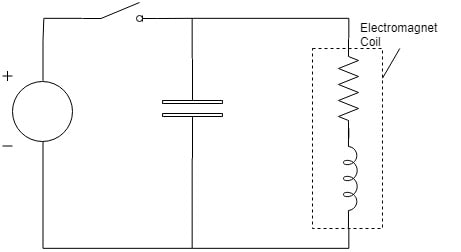LL631
Industrial
- Nov 30, 2018
- 24
I have a DC electromagnet which has problems with residual magnetism, is it feasible to place a capacitor in parallel with the coil to act as an LC oscillating circuit in order to de-magnetize the magnet when the power is removed? i.e. if I sized the capacitor so that when the supply was removed the under damped response would create a decaying AC voltage over the coil, de-magnetizing it?
If this is possible am I correct in saying that I would need to size the capacitor so that the Q factor > 0.5 in order to create the underdamped response? Then how would I determine the required underdamped frequency to cause de-magnetization?

If this is possible am I correct in saying that I would need to size the capacitor so that the Q factor > 0.5 in order to create the underdamped response? Then how would I determine the required underdamped frequency to cause de-magnetization?

